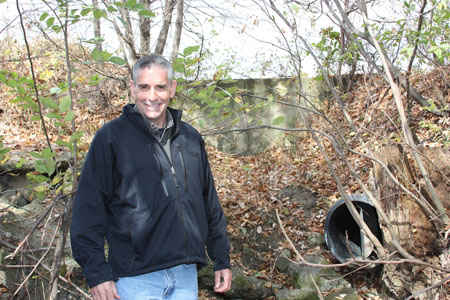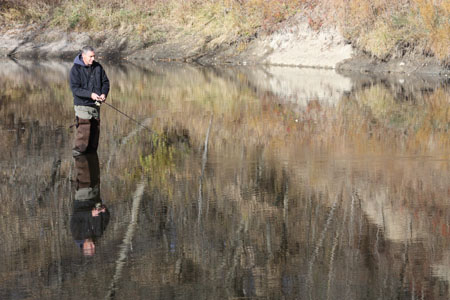Pat Baskfield
Hydrologist, Minnesota Pollution Control Agency
Rivers is where Pat Baskfield feels the most at home and it fits his lifestyle of living along the Watonwan and working as a hydrologist for the Minnesota Pollution Control Agency. Pat spends his day researching water quality problems in his position of state-wide monitoring coordinator and his leisure time fishing, paddling or just getting into one of the many rivers around him. Over the years he has made an effort to introduce people into this special place including his three daughters and many of his colleagues who work with him on Minnesota River Basin issues. Usually all it takes is Pat telling the story of the annual mayfly hatch creating a white cloud hanging over the Watonwan River during a full moon in August.
Pat Baskfield grew up enjoying the great outdoors where he hunted, fished and camped every chance he could. Eventually this led to him discovering a passion for fisheries and wildlife that stays with him today. All of this started when fishing on a lake and he began to wonder why it looked so green. “I thought it would be wonderful to work in the water quality field,” explains Pat. “To be responsible for some of the efforts to restore waters back to a better condition than the one I was on.” As any good scientist Pat did his research. First he talked to the head of the DNR who convinced him to go into the hydrology field because most people went into fisheries and wildlife.
From the University of Minnesota he got a master’s degree in forest hydrology taking a combination of hydrology classes, chemistry classes, some math and some physics. Pat went to work for MPCA in St. Paul before moving down to the Mankato area where he continues to pursue his love for discovering how to improve water quality and exploring the rivers with a kayak and fishing rod. “I guess solving the mystery, unearthing the different factors that affect water quality to me has been a challenge,” says Pat. “That’s also been fascinating.”
“I think when compared to pre-settlement conditions the river is certainly much, much worse shape than it was. As far as the last 40 years or 30 years it has gotten better. There has been some activities that has gone on in the landscape to reduce sediment and nutrient concentrations and I think a lot of that has to do with the heighten awareness of what a great resource this can be. There has been a tremendous push to get land users along this river to adopt best management practices such as residue management, throwing in buffer strips, wetland restorations and other activities, storm water runoff retention basins, etc.”



